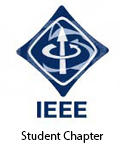Raj Mittra Distinguished Lecture Series Archives
Dr. Felix Miranda
Date: Thursday, March 19th, 2015
Time / Location: 4 PM / 160 Willard Building
Title: Recent Efforts in Advanced High Frequency Communications at the Glenn Research Center in Support of NASA Mission
Abstract:
This presentation will discuss research and technology development work at the NASA Glenn Research Center in advanced frequency communications in support of NASA’s mission. An overview of the work conducted in-house and also in collaboration with academia, industry, and other government agencies (OGA) in areas such as antenna technology, power amplifiers, radio frequency (RF) wave propagation through Earth’s atmosphere, ultra-sensitive receivers, among others, will be presented. In addition, the role of these and other related RF technologies in enabling the NASA next generation space communications architecture will be also discussed.
Speaker’s Bio:
Félix A. Miranda received his B.S. degree in Physics from the University of Puerto Rico in 1983, a M.S. degree in Physics from Rensselaer Polytechnic Institute in 1986, and a Ph.D. degree in Physics from Case Western Reserve University in 1991. He is currently the Chief of the Advanced High Frequency Branch in the Communications and Intelligent Systems Division at the NASA Glenn Research Center in Cleveland, Ohio. His areas of expertise are antenna technology, high transition temperature superconductors (HTS) thin film and microwave components, ferroelectric tunable microwave components, and microwave integrated circuits and devices for space and ground-based communications. Dr. Miranda is a Fellow of the Institute of Electrical and Electronics Engineers (IEEE), a member of the American Institute of Aeronautics and Astronautics (AIAA), a member of the American Physical Society (APS), and a member of the Forum of Industrial and Applied Physicists (FIAP). He is a member of the Editorial Board of Integrated Ferroelectrics (Taylor & Francis), a member of the Review Board of the IEEE Transactions on Microwave Theory and Techniques, a member of the Review Board of the IEEE Transactions on Antennas and Propagation, and a member of the Review Board of the IEEE Microwave and Wireless Components Letters. He is also a reviewer for the Journal of Applied Physics, Applied Physics Letters, Thin Solid Films, and ACS Applied Materials & Interfaces. Dr. Miranda has authored or co-authored more than 170 journal and conference publications in his areas of expertise. He has written several book chapters, is the co-editor of several conference proceeding volumes on ferroelectric materials and devices, and is the co-editor of the book “Advanced Nanomaterials for Aerospace Applications,” (Pen Stanford Publishing). He is the co-inventor of six U.S. patents, with three patents pending. Dr. Miranda is a former NASA Administrator’s Fellow and received the 2001 Outstanding Technical Achievement Award from the Hispanic Engineer National Achievement Awards Conference (HENAAC). He is the recipient of the 2007 NASA Exceptional Service Medal for outstanding technical and managerial leadership in antenna and microwave technologies for space communications. Dr. Miranda received the 2007 R&D100 award from the R&D Magazine for the development of an Antenna Near-Field Probe Station Scanner and is the recipient of the 2009 NASA Equal Employment Opportunity Medal for exceptional contributions to the goals of the Equal Employment Opportunity Program through work with under-represented universities and students. He received the 2009 Wall Street Journal’s Technology Innovation Award as a runner-up in the wireless category for the invention, “Miniature Implantable Radio Frequency System for Real Time Telemetry from Microelectromechanical Systems Based Sensors and Actuators.” Dr. Miranda was awarded the 2010 NorTech Innovation Award for “Radio Frequency Telemetry System for Implantable Bio-MEMS Sensors.” He is also the recipient of the 2010 R&D100 award from the R&D Magazine for the development of a Thin Film Ferroelectric High Resolution Scanning Reflectarray Antenna for Aerospace Communications, and received the 2010 NASA Glenn Research Center Diversity Leadership Award for his efforts to promote and further diversity in science and technology.
Professor Dan Schonfeld
Co-Director, Multimedia Communications Laboratory
Department of Electrical & Computer Engineering
University of Illinois at Chicago
presents: Genomic Signal Processing: Evolution, Structure, and Regulation
March 5, 4:00 p.m.
160 Willard
Abstract
Genomic and proteomic sciences and technology have made enormous progress over the past few decades. Molecular biotechnology is on the verge of a tremendous breakthrough in providing fundamental new insights into biological systems. As a result, it is likely that over the next few decades personalized medicine will be able to combat disease such as cancer in an effective way that will increase longevity and enhance quality of life. In this talk, we explore the use of system theory for analysis of genomic and proteomic molecular systems. We propose a communication model to study evolutionary systems and genomic structure. We will also model gene regulation networks as Markov chains and investigate the use of perturbation in controlling the dynamics of gene regulation.
Biography
Dan Schonfeld received the B.S. degree in Electrical Engineering and Computer Science from the University of California at Berkeley, and the M.S. and Ph.D. degrees in Electrical and Computer Engineering from The Johns Hopkins University, in 1986, 1988, and 1990, respectively. In 1990, he joined the University of Illinois at Chicago, where he is currently a Professor in the Departments of Electrical and Computer Engineering, Computer Science, and Bioengineering. Dr. Schonfeld has been elevated to the rank of Fellow of the IEEE “for contributions to image and video analysis.” He was also elevated to the rank of Fellow of the SPIE “for specific achievements in morphological image processing and video analysis.” Dr. Schonfeld has been elected University Scholar of the University of Illinois and received the Graduate Mentoring Award of the University of Illinois at Chicago. He has authored over 200 technical papers in various journals and conferences. He was co-author of a paper that won the Best Paper Award at the ACM Multimedia Workshop on Advanced Video Streaming Techniques for Peer-to-Peer Networks and Social Networking 2010. He was also co-author of papers that won the Best Student Paper Awards in Visual Communication and Image Processing 2006 and IEEE International Conference on Image Processing 2006 and 2007. He is currently serving as Editor-in-Chief of the IEEE Transactions on Circuits and Systems for Video Technology. He has served as Deputy Editor-in-Chief of the IEEE Transactions on Circuits and Systems for Video Technology and Area Editor for Special Issues of the IEEE Signal Processing Magazine. His current research interests are in signal processing, image and video analysis, video retrieval and communications, multimedia systems, computer vision, medical imaging, and genomic signal processing.
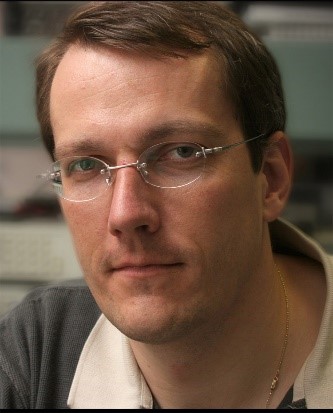
Dr. Christophe Caloz
February 19, 4:00 p.m.
160 Willard
Free and open to the public
Title: ELECTROMAGNETIC SPACE, TIME AND SPACETIME DISPERSION ENGINEERING
Abstract
Everything in our universe occurs in space, time, and spacetime where space and time are interdependent. These concepts are therefore fundamental across all areas of human activities, including history, economy, philosophy, arts and sciences.
The author believes systematic endeavours in manipulating waves in space, time and spacetime will bring about considerable opportunities towards the development of tomorrow’s electromagnetic science and technology.
Manipulation waves in space essentially consists in engineering their spatial frequency (k) spectrum, which may be performed using conventional electromagnetic structures, such as apertures, antennas, lenses, polarizers, photonic crystals, Talbot imagers, optical masks, etc. However, the frontiers of spatial dispersion engineering may be pushed far beyond the current state of the art, particularly using the novel concept of metasurfaces. The talk will present several innovations in this area, including magnetless nonreciprocal gyrotropy, generalized refraction, multiple wave transformation, multi-refringence, and orbital angular momentum multiplexing.
In time, manipulating waves essentially consists in engineering their temporal frequency (?) spectrum, as partly done in ultrafast optics where oscillations are too fast to be handled by digital signal processors, and where real-time chirping and nonlinear materials and devices have therefore to be used instead. Such concepts have been little explored in electromagnetics, and may represent a solution to the exploding demand for faster and more reliable radio if sufficient progress is made. The author developed in his group metamaterial-inspired structures called phasers, which provide specifiable group delay versus frequency responses to perform unprecedented temporal dispersion engineering. The talk will present the related Radio Analog Signal Processing (R-ASP) concept and technology, and demonstrate a number of related applications, such as spectrum sniffing, real-time Fourier analysis, and dispersion code multiple access.
Aforementioned concepts typically concern monochromatic spatial dispersion engineering and mono-directional temporal dispersion engineering. Combining the two aspects in simultaneous space and time dispersion engineering, as nature does it in rainbows and humans in holograms, will open up further horizons in electromagnetics processing. The talk will also address this area, first introducing the fundamental concept of temporal to spatial frequency mapping, and next describing a few recent applications, including real-time spectrogram analysis and two-dimensional mapping for the processing of ultrafast waves.
Finally, novel concepts in electromagnetic spacetime discontinuities, where space and time are interdependent as in the theories of special and general relativity, will be introduced and discussed as a potential platform for future developments in electrodynamics.
BIO:
Christophe Caloz received the Diplôme d'Ingénieur en Électricité and the Ph.D. degree from École Polytechnique Fédérale de Lausanne (EPFL), Switzerland, in 1995 and 2000, respectively. From 2001 to 2004, he was a Postdoctoral Research Fellow at the Microwave Electronics Laboratory, University of California at Los Angeles (UCLA). In June 2004, Dr. Caloz joined École Polytechnique of Montréal, where he is now a Full Professor, the holder of a Canada Research Chair (CRC) and the head of the Electromagnetics Research Group. He has authored and co-authored over 550 technical conference, letter and journal papers, 13 books and book chapters, and he holds several patents. His works have generated about 13,000 citations, and he is a Thomson Reuters Highly Cited Researcher. Dr. Caloz is a Member of the Microwave Theory and Techniques Society (MTT-S) Technical Committees MTT-15 (Microwave Field Theory) and MTT-25 (RF Nanotechnology), a Speaker of the MTT-15 Speaker Bureau, the Chair of the Commission D (Electronics and Photonics) of the Canadian Union de Radio Science Internationale (URSI) and an MTT-S representative at the IEEE Nanotechnology Council (NTC). In 2009, he co-founded the company ScisWave, which develops CRLH smart antenna solutions for WiFi. Dr. Caloz received several awards, including the UCLA Chancellor’s Award for Post-doctoral Research in 2004, the MTT-S Outstanding Young Engineer Award in 2007, the E.W.R. Steacie Memorial Fellowship in 2013, the Prix Urgel-Archambault in 2013, and many best paper awards with his students at international conferences. He has been an IEEE Fellow since 2010 and an IEEE Distinguished Lecturer for the Antennas and Propagation Society (AP-S) since 2014. In 2014, he was elected as a member of the Administrative Committee of AP-S. He is currently also a Distinguished Adjunct Professor at King Abdulaziz University (KAU), Saudi Arabia. His research interests include all fields of theoretical, computational and technological electromagnetics, with strong emphasis on emergent and multidisciplinary topics, including particularly metamaterials, nanoelectromagnetics, exotic antenna systems and real-time radio.
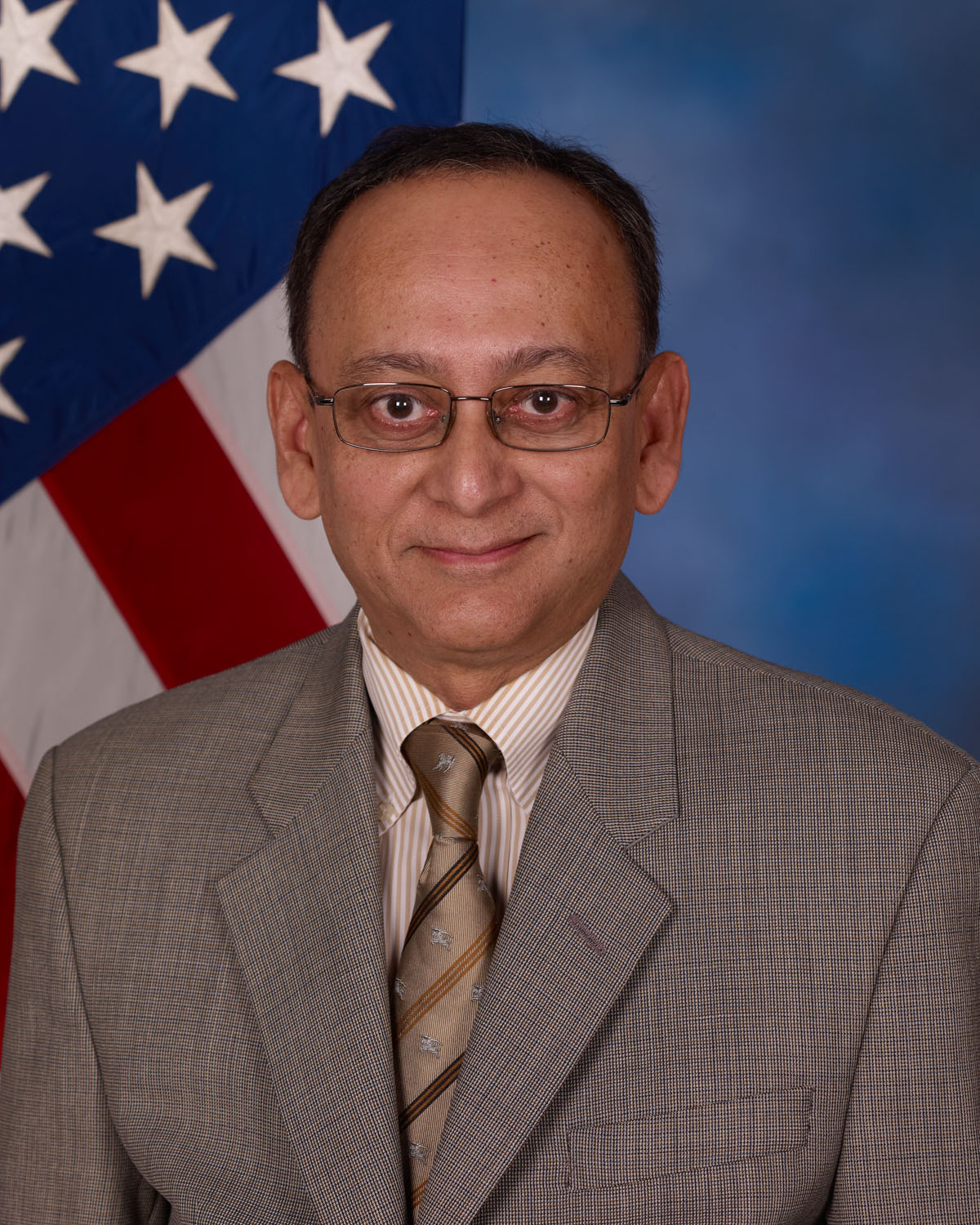
Dr. Mahbub Hoque
December 4, 4:00 p.m.
158 Willard
Free and open to the public
Title: Current Activities and Capabilities of Radio Frequency Communication of the U.S. Army R&D Engineering Command
Abstract:
Dr. Mahbub Hoque will present the research activities and current capabilities of the Radio Frequency Communication (RFC) Division of the U.S. Army Research, Development and Engineering Command, located at Aberdeen Proving Ground, MD. The RFC Division is extensively involved in basic and applied research in support of the Solider in the area of material science and its application to novel antenna technologies such as embedded multifunctional conformal antennas. Other areas of research include digital signal processing and its application to communication systems, such as multiple input, multiple output (MIMO), and developing new spectrum-efficient technologies such as Dynamic Spectrum Access (DSA) for application to tactical radios. The RFC Division utilizes sophisticated radio frequency modeling and simulation tool development for application to antenna coupling analysis, providing interference mitigation solutions using innovative techniques, and developing new propagation models for the tactical environment. Dr. Hoque will also address potential collaboration opportunities with the Army Research Laboratory and its future vision.
Bio:
Dr. Mahbub Hoque is presently serving as the Division Chief of the Radio Frequency Communications Division of the Space & Terrestrial Communications Directorate (S&TCD) in the U.S. Army’s Communications Electronics Research Development and Engineering Center (CERDEC), Aberdeen Proving Ground, Maryland. During the period of June 2007 to June 2013, Dr. Hoque simultaneously served as the Chief Scientist of S&TCD. From June 2012 to January 2013, Dr. Hoque also served as the acting Director of S&TCD.
During his tenure as the Directorate’s Chief Scientist, Dr. Hoque led S&TCD’s basic research program, encompassing technology areas including network science, nanotechnologies, software-defined radios, network operations, modeling and simulation, tactical and strategic satellite communications, information assurance, antennas, electromagnetic interference/electromagnetic compatibility, spectrum management, and evolutionary commercial wireless technologies.
As Division Chief, Dr. Hoque leads his 100+ strong workforce dedicated to providing engineering solutions in the areas of spectrum management and electromagnetics. The Division operates in several critical technology areas, including the research, development, and engineering of new antenna technologies; modeling and simulation to study and mitigate coupling issues between collocated antennas; metamaterial research and development; and various spectrum management initiatives, to include the development of spectrum architectures, cognitive networks, et al.
Prior to joining S&TCD in 2000, Dr. Hoque was a Director at Telcordia Technologies where he received 1996 Bellcore Presidential Award for his work analyzing the impacts of radio interference on Digital Subscriber Line technology. He has authored more than 70 publications and has chaired many sessions in various national and international conferences and symposiums. Dr. Hoque received his PhD in Electrical Engineering (1983) from University College London, U.K. in electromagnetics and antennas. Dr. Hoque is the recipient of various awards, including the Commanders Award for Civilian Service.
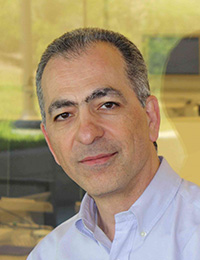
Dr. Khalil Najafi
Schlumberger Professor of Engineering, and Chair of Electrical and Computer Engineering at the University of Michigan
"Biomimetic Hair Transducers: Utilizing the Third Dimension"
November 13,
4:00 p.m., 158 Willard
Abstract:
Nature and biology utilize a myriad of structures, materials, and schemes to achieve superb sensing performance with extreme reliability and robustness. One structure used commonly in nature is the “hair”. The attractive features of “hair”-like structures are their small footprint and large height, which makes them useful for large-area and low-cost manufacturing, and their flexibility in material and mechanical properties. Hair-like sensors are used in nature for acoustic, chemical, flow, pressure, and gas sensing, among others. Hair-like actuators and passive structures are also used for thermal management, filtering, fluid flow control, to name a few. This talk discusses opportunities and approaches for developing hair-like biomimetic structures for sensing and actuation applications. It presents examples of hair structures used in biology for achieving specific sensing functions, and provides a review of past work, fabrication technologies, and the role of electronics in making next-generation multi-element micro-instruments. Examples of micro hair sensor for measuring airflow speed and direction at the University of Michigan based on a novel micro-hydraulic amplification, acceleration based on ultra-dense arrays for accelerometers will be presented as examples of biomimetic hair sensors.
Speaker's bio:
Khalil Najafi is the Schlumberger Professor of Engineering, and Chair of Electrical and Computer Engineering at the University of Michigan since September 2008. He served as the Director of the Solid-State Electronics Laboratory from 1998-2005, the deputy director of the NSF ERC on Wireless Integrated Microsystems (WIMS) from 2000-2009, and has been the director of NSF’s National Nanotechnology Infrastructure Network (NNIN) since 2004. He received the B.S., M.S., and the Ph.D. degree in 1980, 1981, and 1986 respectively, all in Electrical Engineering from the University of Michigan, Ann Arbor. His research interests include: micromachining technologies, micromachined sensors, actuators, and MEMS; analog integrated circuits; implantable biomedical microsystems; micropackaging; and low-power wireless sensing/actuating systems.
Dr. Najafi has been active in the field of solid-state sensors and actuators. He has been involved in several conferences and workshops dealing with micro sensors, actuators, and microsystems, including the International Conference on Solid-State Sensors and Actuators, the Hilton-Head Solid-State Sensors and Actuators Workshop, and the IEEE/ASME Micro Electromechanical Systems (MEMS) Conference. He has served as associate editor or editor of several journals. He is a Fellow of the IEEE and the AIBME, and the recipient of the IEEE EDS Daniel E. Noble Award for Emerging Technologies for 2015.
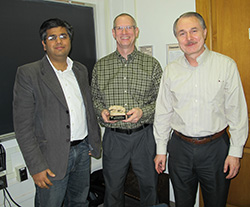
Dr. W. Clem Karl
Professor of Electrical and Computer Engineering and Biomedical Engineering at Boston University
"Computational Imaging for Joint Processing and Labeling"
POSTPONED to Friday, Oct. 24,
9:30 a.m. in 109 EE West
Abstract:
A revolution in imaging is currently underway involving the
integration of sensing, models, and computation in what is being
called "computational imaging". In this talk I will discuss two
examples of such computational imaging that our group has been
involved with. The first example concerns the integrated solution of
inverse problems with data labeling. Many problems in science and
engineering require the solution of inverse problems, wherein observed
data must be inverted or reconstructed to produce usable
imagery. Examples range from medical tomography, to scanning electron
tomography, to baggage screening for security, to image
deblurring. Often the ultimate goal is to produce a labeling or
segmentation of the resulting latent image. Even when this is not the
primary aim, if the observed data are limited or of poor quality it
may make sense to constrain the resulting output to a limited set of
values to obtain useful information. The traditional approach to
obtaining such discrete outputs in inverse problems is to perform an
ad hoc, decoupled set of processing steps consisting of conventional
inversion (e.g. filtered back projection reconstruction) followed by
some discretization of the resulting, often artifact-filled image. In
contrast, I will present a new approach obtained by extending popular
and efficient graph-cut based discrete-label methods to linear inverse
problems which allows for the direct and integrated inversion and
labeling of data. The second computational imaging example I will
discuss focuses on X-ray CT security applications. In these problems
the goal is to correctly identify materials of interest in baggage
from multi-energy CT imagery. Unfortunately, these images suffer from
severe metal artifacts which make object segmentation and labeling
challenging. I will present a new learning-based framework for
integrated metal artifact reduction and direct object labeling from CT
derived data exploiting a graph optimization framework. The new
integrated approach can produce accurate material labels in the
presence of severe metal artifacts and clutter.
Speaker's bio:
W. Clem Karl received the Ph.D. degree in Electrical Engineering and Computer Science from the Massachusetts Institute of Technology. He is currently Professor of Electrical and Computer Engineering and Biomedical Engineering at Boston University. Karl's research interests are in the areas of statistical signal and image processing, estimation, detection, and medical signal and image processing. He has served as the Editor-in-Chief of the IEEE Transactions on Image Processing and is currently the inaugural Editor-in-Chief of the IEEE Transactions on Computational Imaging. Karl has served on the Signal Processing Society Board of Governors, Conference Board, Publications Board, Nominations and Appointments Committee, and Technical Committee Review Committee. He has been on the Steering Committees for the IEEE Transaction on Medical Imaging and the IEEE International Symposium on Biomedical Imaging, as well as serving as its General Chair. Karl is a Fellow of the IEEE.


